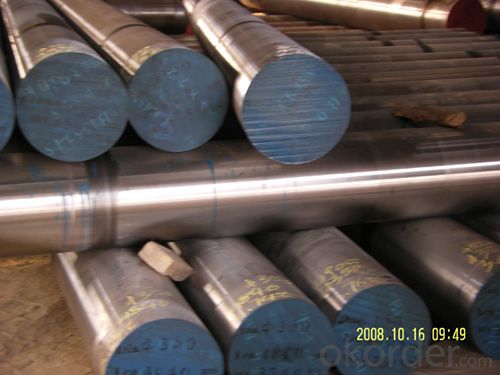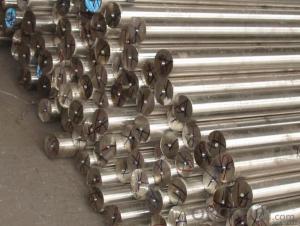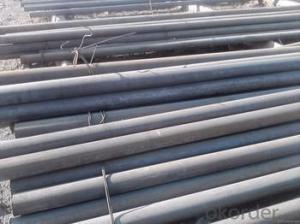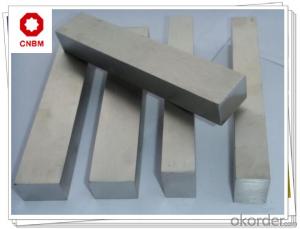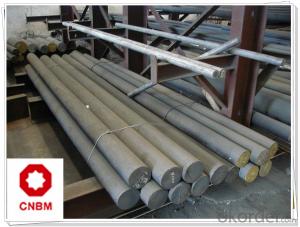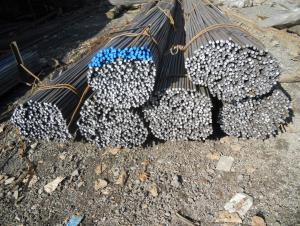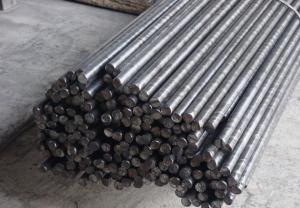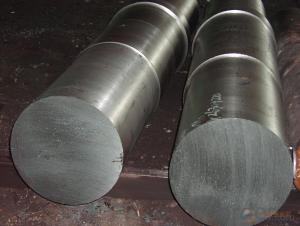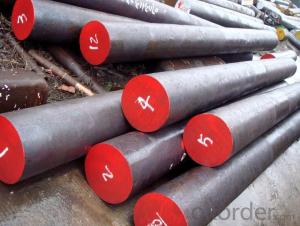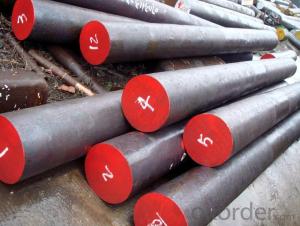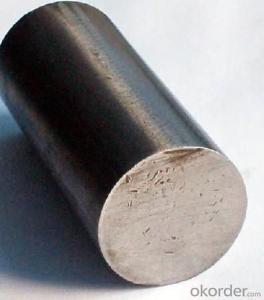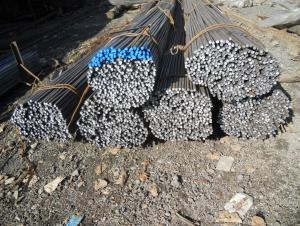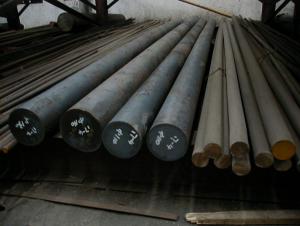Alloyed Round Bar and GB Standard
- Loading Port:
- China Main Port
- Payment Terms:
- TT or LC
- Min Order Qty:
- -
- Supply Capability:
- -
OKorder Service Pledge
OKorder Financial Service
You Might Also Like
Product Description:
OKorder is offering Round Bar at great prices with worldwide shipping. Our supplier is a world-class manufacturer of steel, with our products utilized the world over. OKorder annually supplies products to European, North American and Asian markets. We provide quotations within 24 hours of receiving an inquiry and guarantee competitive prices.
Product Applications:
After hot-rolled the products shaped into coil and delivery as finished product, including round, square, rectangular, hexagonal and so on. Since most of the products are round, it is generally called wire rod. Carbon steel wire rod is widely used in construction and manufacturing. Carbon steel wire rod is mainly used for reinforcement of reinforced concrete and welded structure or reprocessed (roberts , nail, etc.) materials, especially used to produce wire drawing, welding electrode, nails, spring, electronic, precise machinery parts and so on.
Product Advantages:
OKorder's Round Bar are durable, strong, and resist corrosion.
Main Product Features:
· Premium quality
· Prompt delivery & seaworthy packing (30 days after receiving deposit)
· Corrosion resistance
· Can be recycled and reused
· Mill test certification
· Professional Service
· Competitive pricing
Product Specifications:
Manufacture: Hot rolled
Grade: Q195 – 235
Certificates: ISO, SGS, BV, CIQ
Length: 6m – 12m, as per customer request
Packaging: Export packing, nude packing, bundled
Trademark | Rank | Chemical composition (quality score) % | |||||
C | Si | Mn | S | P | |||
| ≤ |
| ≤ | ≤ | |||
Q235 | A | 0.14-0.22 | 0.30 | 0.30-0.65 | 0.050 | 0.045 | |
Q235 | B | 0.12-0.20 | 0.30 | 0.30-0.70 | 0.045 | 0.045 | |
Trademark | Rank | Pulling Test | |||||
Bend PointΔs/Mpa | Tensile Strength | Elongation Ratioδ5% | |||||
Thickness (Diameter) /MM | Thickness (Diameter) /MM | ||||||
≤16 | 16-40 | ≤16 | 16-40 | ||||
≥ | ≥ | ||||||
Q235 | A | 235 | 225 | 375-500 | 26 | 25 | |
Q235 | B | 235 | 225 | 375-500 | 26 | 25 | |
FAQ:
Q1: Why buy Materials & Equipment from OKorder.com?
A1: All products offered byOKorder.com are carefully selected from China's most reliable manufacturing enterprises. Through its ISO certifications, OKorder.com adheres to the highest standards and a commitment to supply chain safety and customer satisfaction.
Q2: What makes stainless steel stainless?
A2: Stainless steel must contain at least 10.5 % chromium. It is this element that reacts with the oxygen in the air to form a complex chrome-oxide surface layer that is invisible but strong enough to prevent further oxygen from "staining" (rusting) the surface. Higher levels of chromium and the addition of other alloying elements such as nickel and molybdenum enhance this surface layer and improve the corrosion resistance of the stainless material.
Q3: Can stainless steel rust?
A3: Stainless does not "rust" as you think of regular steel rusting with a red oxide on the surface that flakes off. If you see red rust it is probably due to some iron particles that have contaminated the surface of the stainless steel and it is these iron particles that are rusting. Look at the source of the rusting and see if you can remove it from the surface.
Images:
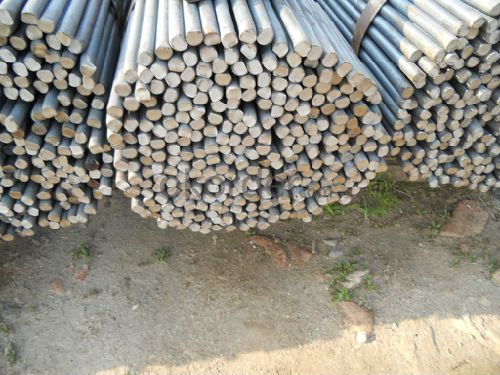
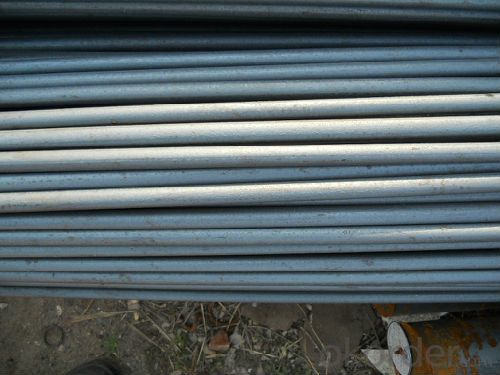
- Q: On the market, 8mm Round Bar is not 9 meters a root? How much does it weigh about 300 meters? How much does it cost?
- The weight is 0.395 kilograms / meter by the theory. Can be rolled, is not the foot, the largest is 7.5 diameter, the price depends on the place, and the price is different from place to place
- Q: Can steel round bars be used for making punches and dies?
- Yes, steel round bars can be used for making punches and dies. Steel round bars are commonly used in tool and die making due to their high strength and durability. They can be machined or forged into the desired shape and then hardened to ensure a long lifespan and resistance to wear and deformation. The hardness and toughness of steel round bars make them ideal materials for withstanding the high forces and pressures involved in punching and shaping various materials. Additionally, steel round bars are readily available in various sizes and grades, making them a cost-effective choice for making punches and dies.
- Q: Can steel round bars be used in the production of power tools?
- Yes, steel round bars can be used in the production of power tools. Steel round bars are often used as raw materials for manufacturing various components and parts of power tools due to their high strength, durability, and resistance to impact and wear. These bars can be machined, shaped, and heat-treated to create the necessary components, such as shafts, handles, and gears, that are crucial for the proper functioning of power tools.
- Q: Can steel round bars be used in the manufacturing of conveyor systems?
- Indeed, for the manufacturing of conveyor systems, steel round bars can serve as a viable option. Possessing remarkable strength and durability, steel proves itself capable of enduring immense loads and offering stability and support to conveyor systems. Within these systems, steel round bars can function as either rollers or shafts, effectively aiding the movement of materials or products along the conveyor belt. The round bars' sleek surfaces enable smooth rotation and minimize friction, guaranteeing the seamless operation of the conveyor system. Moreover, steel round bars can be readily tailored to meet specific requirements of the conveyor system, rendering them versatile and suitable for a myriad of industrial applications.
- Q: What are the different international standards for steel round bars?
- Steel round bars have several international standards that define their specifications and requirements. Some commonly used standards are as follows: 1. ASTM A36/A36M: This standard focuses on carbon structural steel shapes, plates, and bars of structural quality. It is used in the construction of bridges and buildings through riveting, bolting, or welding. It specifies the chemical composition, mechanical properties, and dimensional tolerances for steel round bars. 2. ASTM A615/A615M: This standard lays down the requirements for deformed and plain carbon-steel bars used for concrete reinforcement. It covers bars with diameters ranging from 6 to 60 mm and provides guidelines for chemical composition, mechanical properties, and bend tests. 3. BS 4449: This British Standard deals with steel bars used to reinforce concrete. It outlines the requirements for carbon steel bars in different grades, such as B500B and B500C. It specifies the tensile properties, chemical composition, and dimensional tolerances for these steel round bars. 4. DIN 17100: This German standard specifies general structural steels, including steel round bars. It provides guidelines for the chemical composition, mechanical properties, and technical delivery conditions for various grades of steel bars. 5. JIS G3101: This Japanese Industrial Standard covers general structure rolled steel used for various applications. It includes steel round bars and defines the chemical composition, mechanical properties, and dimensional tolerances for different grades of steel bars. 6. ISO 6935-2: This International Organization for Standardization standard specifies the requirements for hot-rolled steel bars used for concrete reinforcement. It provides guidelines for the chemical composition, mechanical properties, and dimensional tolerances of steel round bars used in construction. These examples represent only a few of the international standards available for steel round bars. To ensure compliance and quality of the steel round bars used, it is essential to consult the appropriate standard based on the specific application and requirements.
- Q: The 8 thread can replace the beam stirrups by steel
- Fixed beam and beam is set in the stirrups stirrups, stirrup stirrup is higher than that of the non quota subheadings subheadings, because all trouble making and binding stirrups. In addition, need to see which parts of the ring beam.
- Q: Can steel round bars be used in the manufacturing of couplings?
- Yes, steel round bars can be used in the manufacturing of couplings.
- Q: What are the different types of steel used to make round bars?
- The production of round bars involves the utilization of various types of steel. The selection of steel depends on the desired characteristics and applications of the round bars. Carbon steel is a commonly utilized steel for round bars due to its remarkable strength and durability. It finds extensive use in construction, machinery, and automotive components, where a sturdy and inflexible material is required. Stainless steel is another type of steel employed for round bars. It is renowned for its ability to resist corrosion and withstand high temperatures. Applications that necessitate resistance to moisture, chemicals, and heat, such as food processing equipment, medical devices, and architectural structures, often employ stainless steel. Alloy steel, which is formed by combining iron with other elements like manganese, chromium, and nickel, is also used for round bars. This blending enhances its properties, resulting in improved strength, hardness, and resistance to wear and tear. Aerospace components, automotive parts, and machinery often employ alloy steel round bars due to their high strength and toughness. Tool steel, designed specifically for the production of tools and dies, is another type of steel used for round bars. It is renowned for its high hardness, wear resistance, and ability to maintain a sharp cutting edge. Tool steel round bars are commonly employed in applications involving cutting, shaping, and forming, such as drills, punches, and molds. In conclusion, the choice of steel for round bars is determined by specific application requirements, including factors such as strength, corrosion resistance, heat resistance, and wear resistance.
- Q: How can steel round bars be protected against rust?
- There are various ways to protect steel round bars from rust. One popular method involves applying a protective coating, like paint or a rust-resistant primer, which acts as a barrier between the steel and its surroundings, preventing moisture and oxygen from reaching the metal surface. Another effective approach is to galvanize the steel by immersing it in molten zinc. This creates a sacrificial barrier that shields the steel, even if it gets scratched or damaged. Maintaining the steel round bars is crucial in preventing rust. This involves keeping them clean and dry, as moisture is a major catalyst for rust formation. Regular inspections for rust or damage and prompt repairs are also important to prevent further corrosion. Storing the bars in a dry and well-ventilated area can help reduce the risk of rust. Elevating the bars off the ground or using moisture-absorbing materials, like silica gel packets, can provide additional protection against moisture buildup. Lastly, using corrosion inhibitors or rust-preventative oils can create a thin film on the surface that inhibits rust formation. By implementing these methods, steel round bars can be effectively shielded from rust, ensuring their durability and structural integrity.
- Q: What are the different surface treatments for steel round bars?
- There are several different surface treatments available for steel round bars, each serving a specific purpose and providing unique benefits. Some of the most common surface treatments for steel round bars include: 1. Hot-dip galvanizing: This process involves immersing the steel round bars in a bath of molten zinc, which creates a protective coating that helps prevent corrosion and rusting. Hot-dip galvanizing is an effective treatment for steel round bars used in outdoor or corrosive environments. 2. Painting: Applying a coat of paint to the surface of steel round bars not only enhances their appearance but also provides a protective barrier against moisture and oxidation. Painting is commonly used for decorative purposes or when a specific color is desired. 3. Powder coating: Powder coating involves applying a dry powder to the steel round bars, which is then cured under heat to form a durable and attractive finish. This treatment offers excellent resistance to impact, chemicals, and UV rays, making it suitable for various applications. 4. Electropolishing: This process uses an electric current and an electrolyte solution to remove a thin layer of the steel round bars' surface, resulting in a smooth and shiny finish. Electropolishing improves the appearance and corrosion resistance of the steel, making it ideal for applications that require a high level of cleanliness and aesthetics. 5. Passivation: Passivation involves treating the steel round bars with an acid solution to remove any free iron or iron oxide from the surface, thus enhancing their corrosion resistance. Passivation is commonly used for stainless steel round bars to increase their longevity and prevent staining or rusting. 6. Shot blasting: Shot blasting is a mechanical surface treatment that involves bombarding the steel round bars with small steel balls or particles at high velocity. This process removes any surface contaminants, scale, or rust, resulting in a clean and roughened surface that improves adhesion for subsequent coatings or treatments. 7. Chrome plating: Chrome plating is a technique where a thin layer of chromium is electroplated onto the surface of steel round bars. This treatment provides excellent corrosion resistance, wear resistance, and a shiny appearance, making it suitable for applications that require durability and aesthetics. Overall, the choice of surface treatment for steel round bars depends on the specific requirements of the application, such as corrosion resistance, aesthetics, or wear resistance. It is important to carefully consider the intended use and environmental conditions before selecting the most appropriate surface treatment for steel round bars.
Send your message to us
Alloyed Round Bar and GB Standard
- Loading Port:
- China Main Port
- Payment Terms:
- TT or LC
- Min Order Qty:
- -
- Supply Capability:
- -
OKorder Service Pledge
OKorder Financial Service
Similar products
Hot products
Hot Searches
Related keywords




